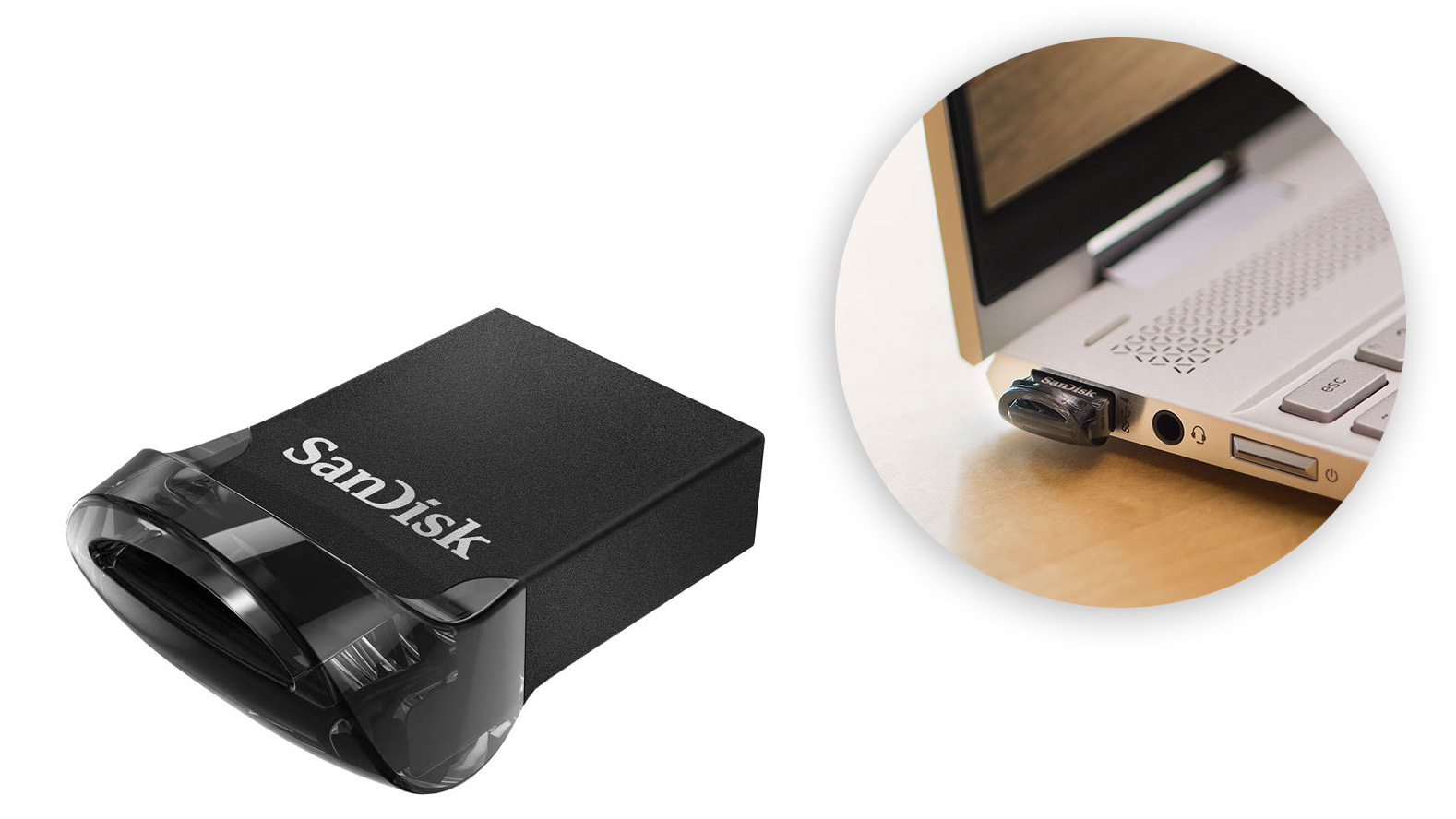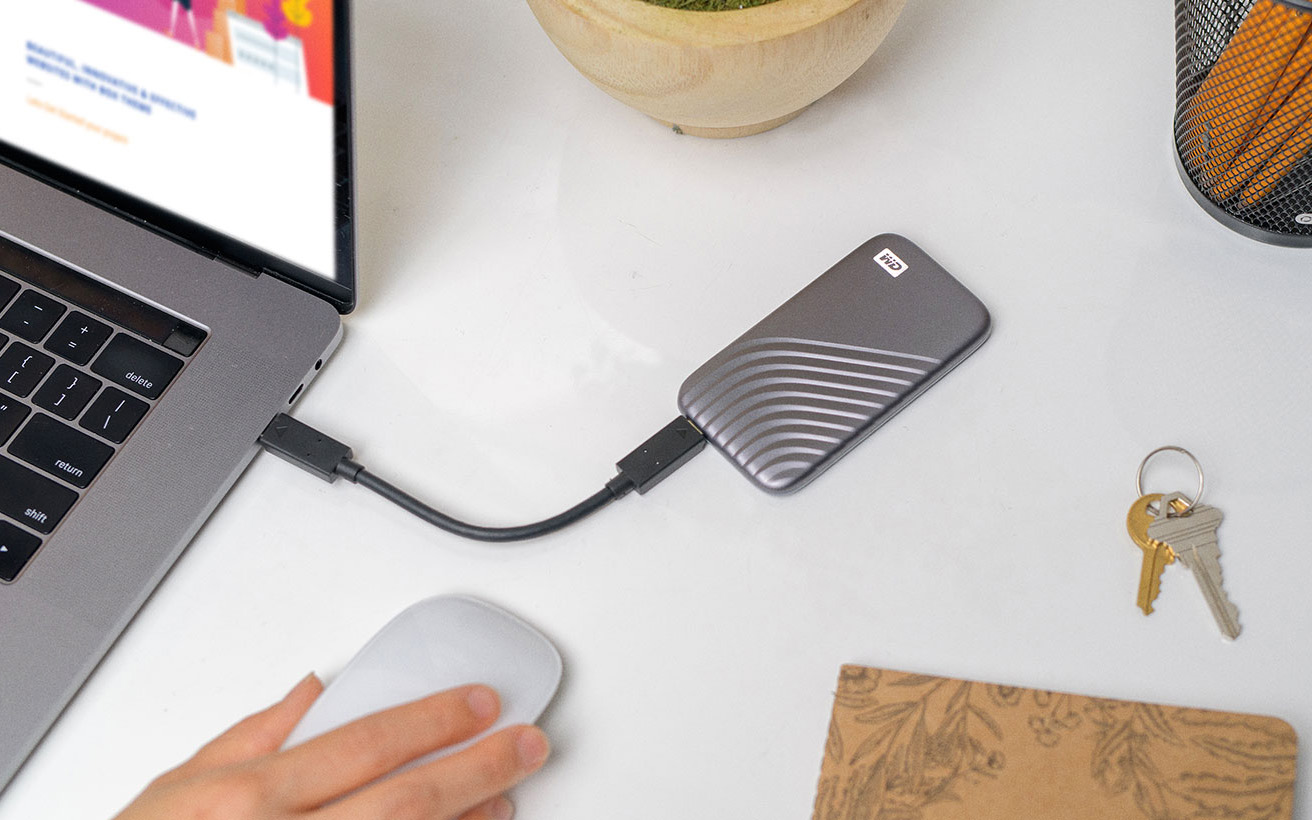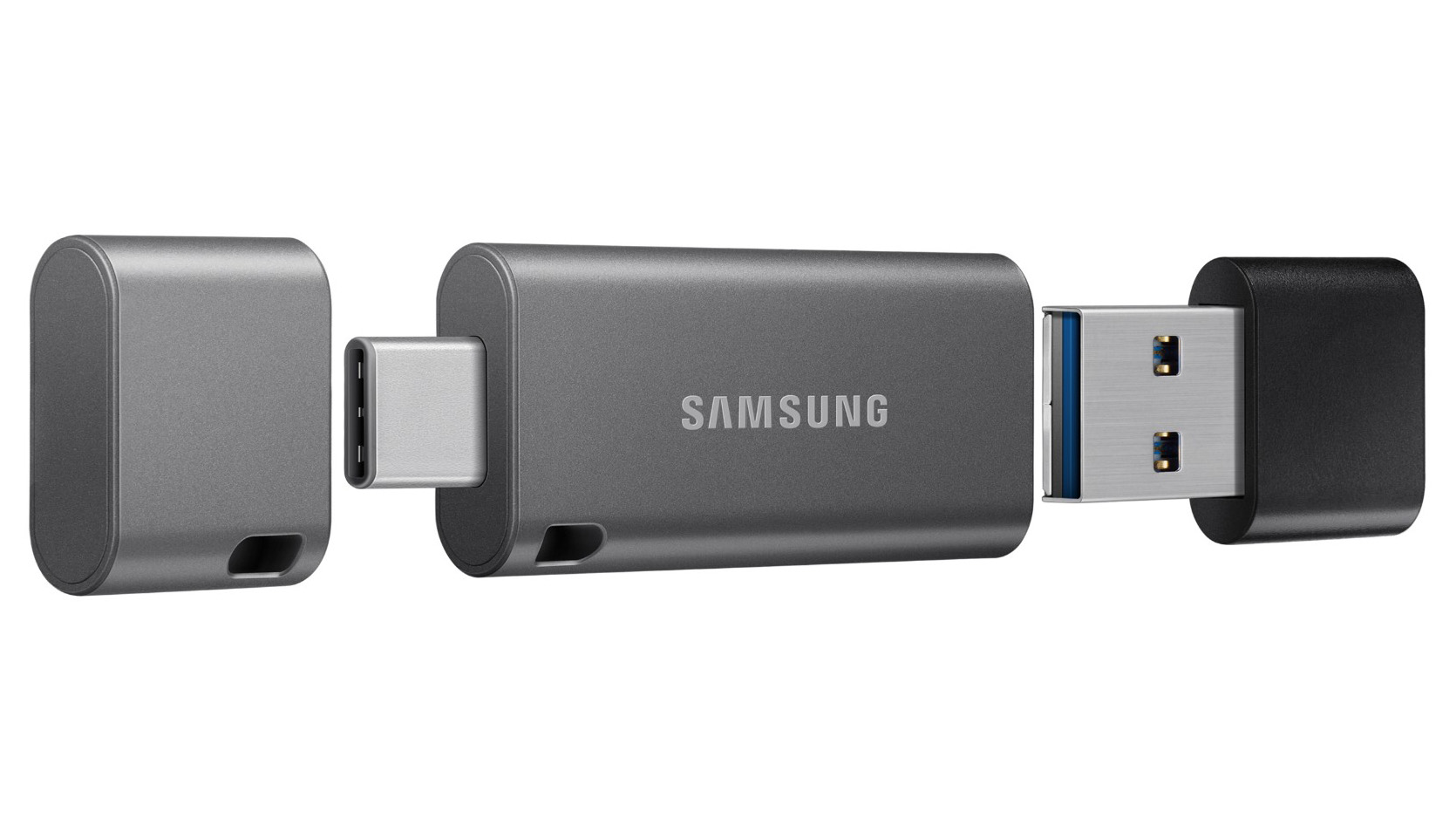Can I use an ultra-fast USB stick instead of an SSD to boost my laptop’s storage?
Wouldn’t that be just perfect? A simple, tiny plug-in drive that solves all your laptop storage problems?

When you get a laptop, always get one with an SSD and not an internal hard drive – that would be our advice. Laptops with SSDs run a lot faster, handle virtual memory much better and use less power.
But this has two downsides. SSDs are much more expensive than hard drives, so to keep the cost manageable you usually have to compromise on a smaller capacity.
And while a 256GB internal SSD (512GB if you splash out) will be enough for your laptop’s OS and applications, you’ll run out of space almost immediately the moment you start doing any kind of serious photography or video work.
Extra laptop storage: what are the options?
There are three main ways to add storage capacity to your laptop. We’ll leave out internal drive upgrades as these can prove expensive and difficult for most users. We’ll stick to plug-in storage devices.
These boil down to external hard drives (cheap but not fast), external SSDs (fast, but not cheap), or – and this is the point of our question – plug-in ‘thumbsticks’, or USB sticks.
We have buying guides for all three here:
• Best portable hard drives
• Best portable SSDs
• Best flash drives
Get the Digital Camera World Newsletter
The best camera deals, reviews, product advice, and unmissable photography news, direct to your inbox!
What’s the appeal of USB sticks?
There are two things that make USB sticks appealing as storage devices:
1. They are small and simple.
2. You don’t have a cable dangling from your laptop.
We would offer one word of caution, though. External drives and cables might be annoying, but the connection is flexible and resilient. USB sticks are small but it’s a rigid connection and they stick out – and you can do some damage if you snap one off, not just to the USB stick but to the port on your laptop too.
The other unknown with USB sticks is whether they are designed for continuous read/write operation over long periods. We imagine the cheapest might not be, but we would hope that higher capacity, faster flash drives are made with the expectation they might be used this way.

Can you get USB sticks with enough capacity and speed?
Yes and no – this depends entirely on what you need. You can get USB sticks right up to 256GB or larger capacities – a lot more than you might expect for such a small device – and if this is enough then already this is looking like a good solution. They do not, however, offer the capacity of portable hard drives or portable SSDs, which typically start at 500GB and go up to 2TB or more.
The speed issue is even more important. If all you need is supplementary storage or backup, a USB stick could do a good job. The fastest offer read/write speeds fast enough for files you need all the time, so you could use one as a photo archive, for example, or for work in progress. The load and save times won’t be as fast as an SSD but will be faster than a portable hard drive.
USB sticks are unlikely to be fast enough, however, for video editing and playback, especially 4K. A portable SSD drive is the only sensible choice here, as these offer higher capacities and read/write speeds twice as fast as the fastest USB sticks and often many times faster than lower-capacity models.
Here is a table showing some comparative speeds and capacities:
| Model | Type | Capacity | Read/write speed |
|---|---|---|---|
| Transcend StoreJet 25M3 | Hard drive | 1-2TB | 122/122 MB/s |
| WD My Passport | Hard drive | 1-5TB | 114/114 MB/s |
| G-Technology ArmorATD All-Terrain Drive | Hard drive | 1-4TB | 128/124 MB/s |
| SanDisk Extreme Portable SSD V2 | SSD | 250GB-2TB | 693/496 MB/s |
| WD My Passport SSD (NVMe) | SSD | 500GB-2TB | 538/364 MB/s |
| OWC Envoy Pro EX Thunderbolt 3 | SSD | 480GB-4TB | 612/278 MB/s |
| SanDisk Extreme PRO USB 3.2 Solid State Flash Drive | USB stick | 128GB-1TB | 420/380 MB/s |
| PNY PRO Elite 3.0 | USB stick | 32-256GB | 400/250 MB/s |
| Kingston DataTraveler 80 USB Flash Drive | USB stick | 32MB-256GB | 200/60 MB/s |
So what’s the answer?
Yes, a USB stick can replace an SSD drive, but while the fastest and best are starting to approach the speed and capacity of an external drive, they are not there yet. The danger is that you can end up with a storage device that’s almost but not quite big enough and almost but not quite fast enough – you have to be realistic about your needs.

Three things USB sticks are good for
- Swapping files with friends or colleagues. Speed and capacity aren’t important so just get a cheap one – and they can be really, really cheap.
- Emergency storage. You’re away from home, your laptop’s run out of space and you need to store some extra stuff quick. Having a good-sized USB stick in your bag can be a real life-saver.
- File transfer. You can use a decent, fast USB stick for image or video transfer when you’re out in the field with your laptop, then plug it into your desktop machine when you get back. It’s just about the quickest and simplest way to swap files between computers.
Read more:
• Best laptops for photographers
• Best laptops for video editing
• Best portable hard drives
• Best portable SSDs
• Best USB sticks
• Home working: all the kit you need
• Best laptop stands
• PNY announces world’s smallest and fastest SSDs

Rod is an independent photography journalist and editor, and a long-standing Digital Camera World contributor, having previously worked as DCW's Group Reviews editor. Before that he has been technique editor on N-Photo, Head of Testing for the photography division and Camera Channel editor on TechRadar, as well as contributing to many other publications. He has been writing about photography technique, photo editing and digital cameras since they first appeared, and before that began his career writing about film photography. He has used and reviewed practically every interchangeable lens camera launched in the past 20 years, from entry-level DSLRs to medium format cameras, together with lenses, tripods, gimbals, light meters, camera bags and more. Rod has his own camera gear blog at fotovolo.com but also writes about photo-editing applications and techniques at lifeafterphotoshop.com
